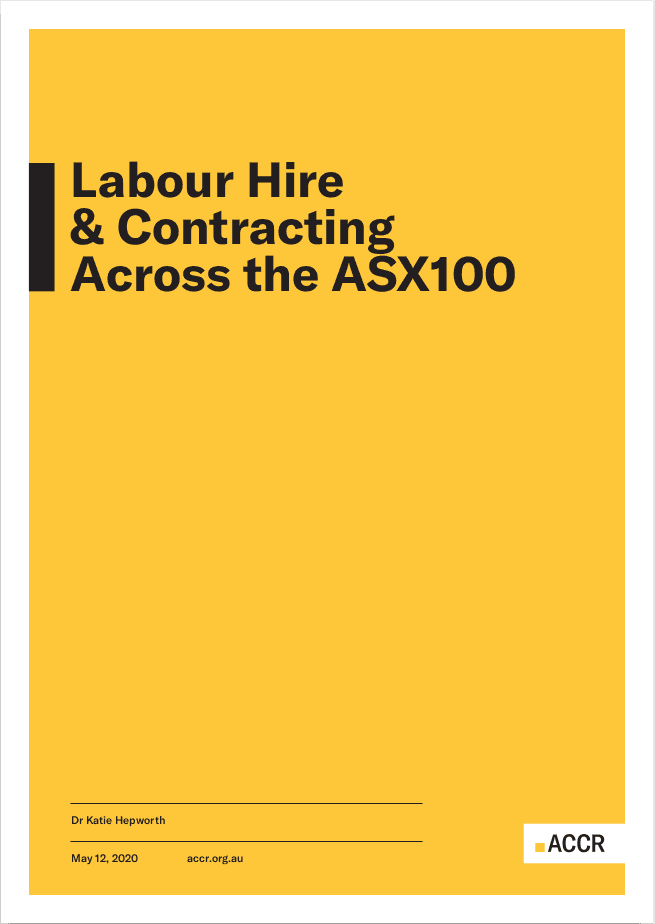Publication Labour Hire & Contracting Across the ASX100
Awards
Labour Hire and Contracting Across the ASX100 received the RIAA ESG Research (non-broker) Award in 2021.
RIAA has reported that the, "Judging Committee awarded this research the highest points of the four pieces of shortlisted research. It achieved the highest average score from the judges across each of the three criteria of usability, rigor and innovation and originality ... This report was a clear standout. Very useful information for investors and likely to have an impact on corporate reporting".
ACCR has produced a new report on Labour Hire and Contracting Across the ASX100.
The report describes the key workforce and operational risks associated with labour hire working arrangements, and analyses how ASX100 companies in three key sectors - mining, construction and commercial cleaning - are exposed to these risks. It also discusses an emerging sector, large-scale solar installation.
The report includes analysis of how ASX100 companies in these sectors are currently reporting on their use of labour hire and contract workers, and makes suggestions for improved reporting by companies and closer engagement by investors.
The contemporary labour hire industry includes many different types of labour hire agencies, spanning from large, multinational corporations with thousands of staff (e.g. CIMIC), through medium-sized and mid-tier labour hire providers, to operators consisting of an individual (or a few individuals) “with a van and mobile phone”.
Companies choose to use labour hire workers for a number of reasons: to reduce costs, to adapt to volatile labour markets, for specialisation, to undermine or circumvent union presence, to avoid employer obligations, to exert greater control over a workforce, or to shift their risks and liabilities.
However, there is evidence that the use of labour hire introduces significant risks, including:
- Poorer Occupational Health and Safety (OHS) outcomes
- Increased possibility of involvement in modern slavery, labour exploitation and wage theft
- Lower levels of worker engagement and loyalty
- Loss of human and intellectual capital
- Reduced visibility of workforce composition, including diversity
- Reduced workforce development, due to less access to training, skills acquisition
The report recommends that investors use their ownership rights to engage companies on their entire workforce, not just their direct workers.
Key findings
- Of the companies analysed, 42% made no material disclosure about their labour hire and/or contracting workforce in annual reporting documents.
- Only two/19 companies (Fortescue and Rio Tinto) define 'labour hire' and/or 'contractor' in their reporting, and their definitions capture different sections of their respective workforces.
- All companies analysed have operations in Australia, but only 37% report the total number and/or percentage of contractors and/or labour hire in these operations.
- While most companies (86%) report some numerical health and safety data, only 26% disaggregate this for their contractor and/or labour hire workforce.
About the author, Dr Katie Hepworth
Katie Hepworth is ACCR's Director of Workers’ Rights. She has a background in the trade union movement, working across campaign, policy and research roles. She has worked extensively on labour migration and workers’ rights in global supply chains. Katie holds a PhD in International Studies from the University of Technology, Sydney.
